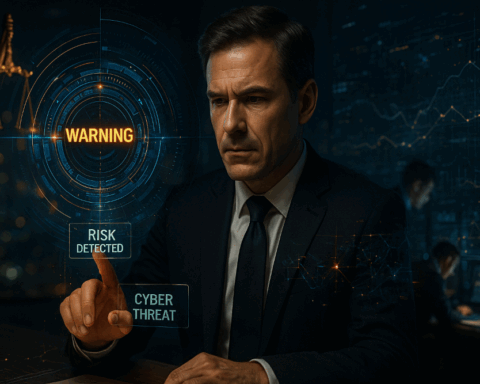Cybersecurity & Privacy form an essential part of Information Governance Services (IGS), focusing on the protection of sensitive data, digital systems, and networks. In an era where cyber threats are becoming increasingly sophisticated and frequent, it is crucial for both national and international companies to implement robust cybersecurity and privacy strategies. Companies facing allegations of financial mismanagement, fraud, bribery, money laundering, corruption, or violations of international sanctions are threatened not only by legal and reputational risks but also by vulnerabilities in their digital infrastructure. A well-developed and implemented cybersecurity and privacy strategy not only protects the organization against cyber threats but also strengthens compliance with privacy legislation and reduces the risks of legal consequences resulting from data breaches or other security incidents.
The Importance of Cybersecurity for Protecting Business Information
In today’s business environment, information is one of the organization’s most valuable assets. This information must be protected from loss, theft, or misuse by both internal and external threats. Cybersecurity provides the necessary tools and processes to safeguard against unauthorized access to corporate networks, data, and systems. This applies to financial data, customer information, as well as sensitive internal documents that are critical to business operations. Organizations that fall victim to cyberattacks can suffer not only significant financial losses but also severe damage to their reputation. Implementing a robust cybersecurity policy enables an organization to detect potential threats early, prevent incidents, and respond quickly, minimizing the impact on business continuity.
Privacy Management and Compliance with Laws and Regulations
In addition to cybersecurity, privacy management is a crucial component of protecting personal data within an organization. Privacy legislation, such as the General Data Protection Regulation (GDPR) in the European Union and other regional laws, imposes strict requirements on how organizations collect, store, and process personal data. Companies accused of violating privacy laws may face heavy fines, legal sanctions, and reputational damage. Compliance with privacy regulations is not only a legal obligation but also plays an important role in maintaining customer trust. An effective privacy management policy ensures that organizations meet legal requirements and protect individuals’ privacy, which is a vital step in avoiding legal complications and preserving business integrity.
Integration of Cybersecurity into Corporate Culture
Cybersecurity is not solely the responsibility of the IT department but must be an integral part of the corporate culture. Employees at all levels need to be aware of potential cyber threats and understand how they can help prevent them. This requires ongoing training and awareness programs that educate staff on best practices for securing data, recognizing phishing attacks, and protecting their digital identities. Integrating cybersecurity into the corporate culture means everyone in the organization plays an active role in minimizing risks. When employees are aware of the risks and consequences of cyber incidents, the overall security of the organization can be significantly enhanced. This proactive approach ensures the organization is prepared for a wide range of threats and capable of responding quickly to emerging challenges.
Technological Innovations in Cybersecurity
The evolution of technology brings both advantages and risks to an organization’s cybersecurity. New technologies such as artificial intelligence, blockchain, and advanced encryption offer enhanced capabilities for strengthening digital security. For example, artificial intelligence can help detect unusual activities within networks and systems, while blockchain technology can improve data integrity by making it transparent and immutable. Implementing these innovative technologies provides organizations with powerful tools to secure their digital assets against cyber threats. However, the integration of new technologies also introduces new risks, such as vulnerabilities that cybercriminals could exploit. Therefore, it is crucial that organizations not only benefit from technological innovations but also thoroughly evaluate and mitigate the potential risks of these technologies.
Managing Risks from Internal Threats
Besides external cyber threats such as hacking or malware, organizations must also consider internal threats. Employees, contractors, and other internal stakeholders can intentionally or accidentally cause security vulnerabilities, for example, through careless handling of sensitive information or by using outdated systems that are poorly protected. Managing these internal risks requires a holistic approach where access to sensitive data and systems is carefully controlled and secured. A thorough risk assessment and the implementation of strict access control measures help reduce the likelihood of internal threats. Moreover, organizations should conduct regular internal audits to identify and resolve potential security gaps before they can be exploited.
Continuous Monitoring and Incident Response
Cybersecurity is a dynamic field where threats are constantly changing and evolving. Therefore, it is essential for organizations to implement continuous monitoring and incident response systems. This means networks and systems are continuously monitored for signs of unusual activities such as unauthorized access or data leaks. In the event of a security incident, clear and effective procedures must be in place to quickly detect, analyze, and respond to the event. This may include involving a specialized incident response team capable of taking swift action to limit damage and restore business operations. Having a solid incident response plan not only helps the organization react quickly but also minimizes the consequences of a cyberattack and limits reputational damage.










